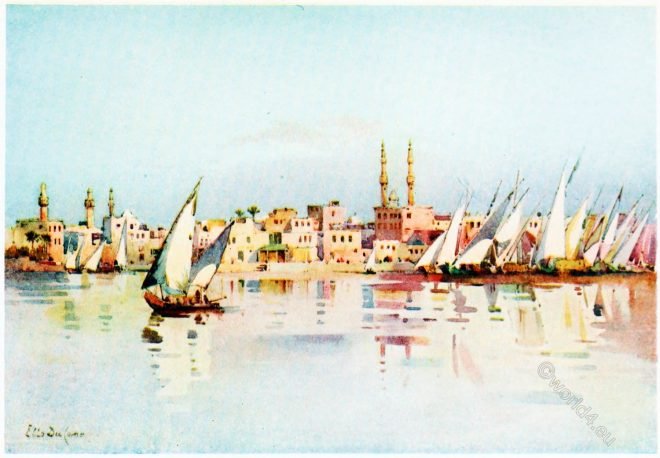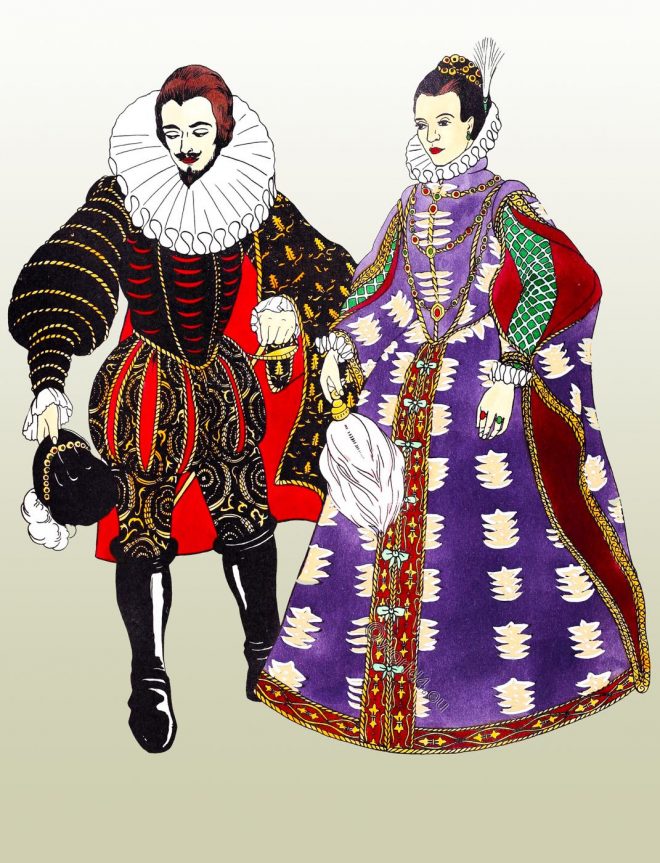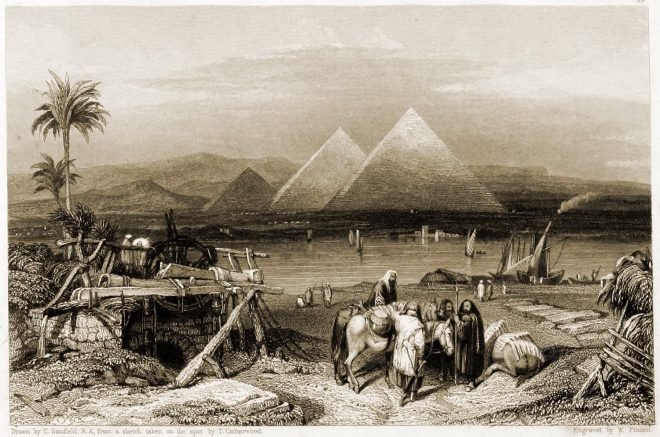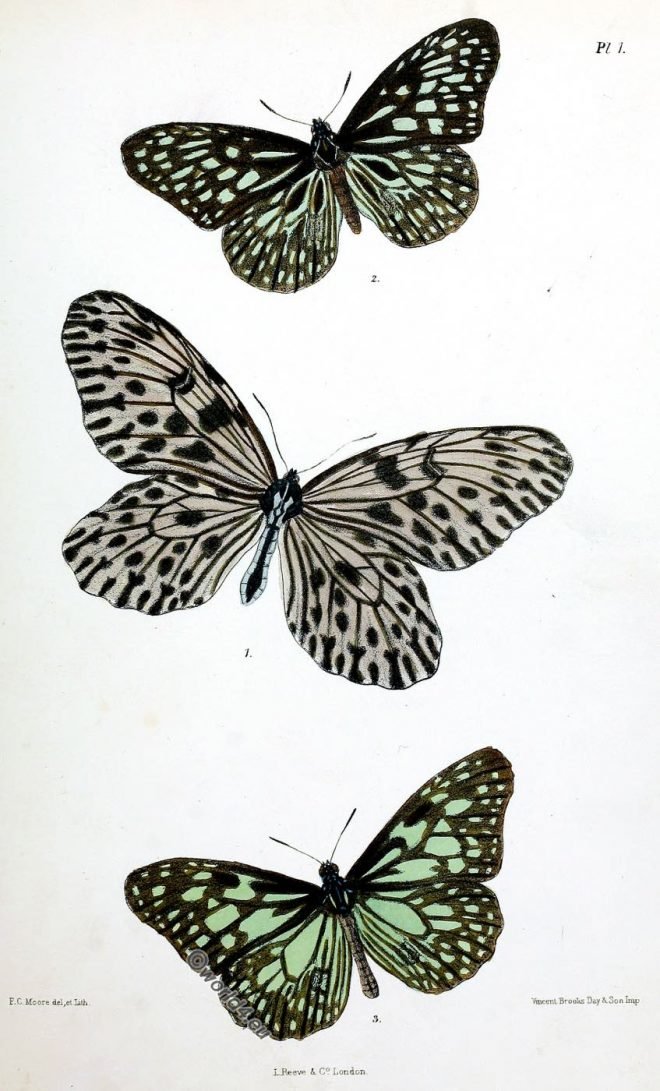Damietta is frequently called the “Venice of Egypt,” and like the real Venice her glories, from a commercial point of view, have departed.
An Elizabethan man’s outfit. Woman wearing a Spanish farthingale.
The man and woman shown here are wearing typical ensembles of the Elizabethan era. The man is somewhat of a dandy. The woman is wearing a Spanish farthingale.
Egypt. The river Nile, with the Pyramids of Ghizeh in the distance.
The Nile is the only river of Egypt, and is called by way of pre-eminence the River.
Kittim, Cyprus, View of Larnaca, 1836.
The island of Cyprus was known to the Hebrews under the name of Chetim (or Kittim), from Kittim the son of Javan, the son of Japhet, the son of Noah.
Nectaria Jasonia. Floater, Spectre, and Silver-paper Fly.
This beautiful butterfly is called by Europeans in Ceylon by the various names of Floater, Spectre, and Silver-paper Fly, as indicative of its graceful flight.
At the Cascade in the rainforest near Lemastota. Sri Lanka 19th century.
One cascade of many others in the rainforest near Lemastota, located at an altitude of about 3000 feet above sea level.
The Lictor panel. A stately Roman lictor in a rich costume.
The Paulus Emilius series, as previously stated, was woven in the third quarter of the XVII century. It showed the Roman hero clad in a sumptuous robe …
Burgamote Horns of the Corporations of Canterbury and Dover.
BEAUTIFUL horns of hammered and embossed bronze belonging to the Corporations of Canterbury and Dover.
Minoan or Mycenaean Age. Costumes of ancient cretan people.
The Cretan costume of Antiquity. Long ago on the island of Crete there lived a group of people called Cretans and belonged to Minoan or Mycenaean Age.
Chapel of the convent of Saint Catherine on Mount Sinai.
The interior of the Chapel of St. Catherine is probably the oldest and the richest of all the Eastern churches










